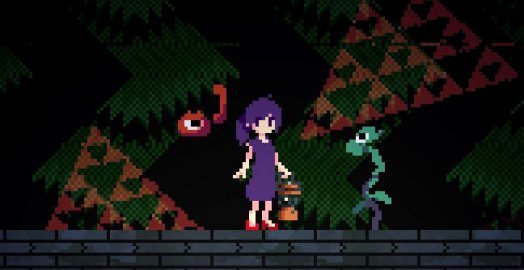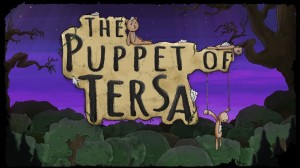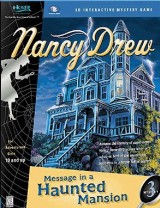Review for Strange Telephone

Instead of just connecting us to people in other places, what if a phone call could physically transport you to a different location – or even wilder, to another realm entirely? Sounds exciting, but then what if your chance of getting back home was determined by trying out countless number combinations? This unique mechanism is the basis of Strange Telephone, an eerie Japanese adventure that blends absurdities and light horror mystery in a series of trippy, ever-changing environments. Starting out, the vast array of worlds and the quirky cast of creatures are all so alluring that they’ll surely motivate you to keep exploring to discover more secrets. But gradually these realms begin repeating themselves, and as the same details pop up again and again, you’ll find yourself trapped in a chain of destinations that seems impossible to escape from. It’s not, but it’s going to take some patience and a fair bit of trial and error in order to ultimately succeed.
With no explanation, the game begins with a young woman named Jill caught in a dark, limbo-like room. A large door floats right behind her that represents the only path to freedom, but of course it’s locked. With only a phone book and a lantern to see in the dark, you are left to figure things out on your own. But you are not alone, as you are accompanied by Graham, a one-eyed, magical green phone. Graham’s ultimate power is a very unique kind of call service. You can punch in any six-digit number you can think of (including * and # for twelve different possibilities) to be transported into another world. If you're ever to help Jill escape, you must use this ‘strange telephone’ to venture deeper into the increasingly unusual surroundings Graham delivers you to.
Graham isn’t the only means of getting around, however. You can only make a call from the original room, and you’ll be returned there when you hang up. But once an outgoing call is made to visit another realm, you can proceed on foot – temporarily – if you’d rather continue from there the old-fashioned way. Walking right and left to find more interactive objects or characters to talk to, I very quickly found out that there are whole new worlds sandwiching the current one. Visible in the top corner of each screen is its own unique phone number to save and call later if you wish to return instantly.
Within a given world, a question mark will appear above Graham to let you know whenever Jill is close to a hotspot. Clicking on any interactive object triggers a dialog box where Jill gives her opinion about it, which usually yields a clue. You can also click on any NPC or try handing them an item to see if they react. All items that are part of a puzzle will go straight into your inventory to be used later. When there’s nothing left to do where you are, you can just walk to the next world (and the next, and the next) until you discover something new, or ‘hang up’ to return to the locked door room and try another arbitrary number on Graham. Since each individual world is very small, Jill and Graham must continuing travelling from one to another, collecting objects and completing quests along the way.
No matter how you choose to get around, like a pay telephone there is a time limit for each call that counts from 0 to 4 at the top left of the screen (representing about a minute of real time). This timer causes screen glitches to appear over time that get gradually worse until you can hardly see anything anymore, encouraging you to keep moving. As if that weren’t incentive enough, if time expires before you hang up, Jill will die. When that happens, you are then returned to the main menu and will have to reload from the last checkpoint. Fortunately the game auto-saves your progress every step of the way, so even though you’ll restart in the main room with the locked door, all of your inventory and phone records will remain intact.
In their travels together, Jill and Graham meet a variety of creatures and beings, including flower spirits, dancing candies, and eyeball-headed plants, which seem to be inspired by the Japanese Yokai. Unfortunately, not much is ever revealed about the two leads. Indeed, the character bios created in the ‘collectibles’ index reveal far more about the NPCs than we ever learn about Jill and Graham. Only after seeing multiple endings was I sort of able to understand why they remained so mysteriously devoid of personality, even among such fantastical and interesting characters. Really though, the game seems to have been designed so that the main character would serve merely as a vessel for players to experience these bizarre adventures for themselves instead of learning about her story.
One of the best parts of the game is the world-hopping. Whether you try a random number and arrive in a haunted house or you venture on foot until you encounter a space rocket, each original setting is thrilling to discover, especially when you meet a new character or encounter a new object for the very first time. But after covering more ground, eventually the rooms begin to feel familiar, each location repeating itself with only minor variations.
The good news is that once you’ve explored enough to have a sense of how to approach the puzzles, that’s when Graham’s ability becomes more useful. Rather than endlessly wandering from screen to screen, you’re given a phone book where you can choose to store any numbers you’ve noted in order to return to those worlds instantly when required. Better yet, each room that gets recorded in your book is accompanied by icons of the items found at that location. These work like preview thumbnails essentially, so if you ever need to find a certain item, you can just scroll down and find it on the list of icons and give that number a call.
An essential part of exploration is the inventory tab, which is designed to resemble a phone dial you can rotate to find your items. What’s interesting is that instead of blank slots, each and every slot already has a designated item to store, indicated by silhouette, so if the slots aren’t full it means you’re still missing some items. Finding them isn’t as easy as simply looking around, however, as some of them need to be earned by performing certain actions first. Using an acquired item doesn’t make it disappear from inventory, instead just staying there available for use again even though it won’t yield any new results.
As novel as this approach feels at first, without much context to make sense of the world, eventually the whole experience begins to get a bit stale and somewhat frustrating. Jill needs the key to unlock the main door, but to find the key she has to go through various quests first, one item (or NPC) at a time. Interacting with a certain object, like watering a graveyard, for example, creates a chain reaction throughout the realm, sometimes even unlocking certain doors and accesses, allowing you to obtain more needed inventory, which will be used to repeat the process all over again. The problem is, these puzzles don’t always make sense, so there’s a lot more experimenting than actual puzzle-solving along the way.
There are clues given by the supporting characters and dialog from time to time, but the game itself doesn’t offer any option other than to roam and try things out instead of providing structured obstacles or clear object-combination rules. I suspect this has something to do with the game’s overall theme, which only becomes clear once you get to the ending, but without this knowledge it is pretty hard to comprehend what you’re supposed to be doing most of the time.
The telephone mechanic and phone book system actually pair perfectly with the vast collection of worlds and items to discover, but the gameplay still requires immense patience to connect the dots. This might have been designed in the spirit of safeguarding secrets and encouraging players to explore as thoroughly as possible, but in my experience the actual number of puzzles I could be proud of solving was rivalled by the times I felt completely stuck, even to the point of having to seek out some online hints towards the end.
While the game’s simplistic 8-bit pixel art might not be particularly attractive on the surface, its sprites are brimming with life. Vivid splashes of color are set against often dark and eerie backdrops, effectively creating a completely different look and feel for each and every world, despite the limited palette. ‘WoodenHouse’ represents a type of room that often consists of just a bed, a chair, and a bookshelf clad in browns and greys, while ‘CandyIsland’, a world that’s eternally raining sweet desserts, is adorned with brightly-colored candy canes and tiles.
Along with these visual cues, signature synthesized music and sounds help create a unique atmosphere for each setting: you’ll hear eerie buzzing whenever you arrive in barren lands or encounter some ghosts, while wacky, overly-cheerful melodies play every time you enter a CandyIsland. Sometimes before even looking, I could already tell where I’d ended up just from the song playing in the background.
Despite some of the ominous-looking environments and monsters here and there (and the timer urging you to stay mobile), there’s no real danger or any sense of urgency for Jill to actually find the key and escape home through the locked door. In fact, there are numerous ‘endings’ to achieve before that ever happens. Getting killed, completing certain quests, and even discovering curious details or events will result in special cutscenes that serve as an ending, though you are free to continue on from that point to find more. Symbols subtly lined up behind Jill’s avatar in the main menu will light up, to a total of eleven, and when all eleven symbols are lit, you’ll know you’ve unlocked each of the endings.
After reaching the final, true ending, I was delighted to discover how the game’s whole theme became clear in a pleasant finale. My question about Jill’s arrival in this world was finally answered, and in hindsight I could see that there was always a little bit of humor behind each puzzle that can only be appreciated after the fact. There are even some surprise game modes available to play afterwards, including a bonus point-and-click mini-adventure featuring Jill in a new world with a slightly different color scheme, and a tear-catching arcade-style game called DROP. The satisfying resolution and entertaining extra games ended up being a rewarding payoff for some of my struggles through long hours of world-hopping confusion.
Ultimately, Strange Telephone is an immersive yet chaotic adventure that moves at its own pace. The puzzles seem random and the seemingly unrelated narrative strings can feel overly obtuse at the time, but they are wonderfully tied up at the end of the game if you're willing to stick with it. Despite its dark tones, this is a surprisingly light experience that works best when you just let yourself get a little lost in it, with all the frustration that can entail. Never mind the latest app on your own smartphone; if you’re looking for something really different, try out Strange Telephone instead. You just never know who might be on the other end of the line, or where you might end up.






























